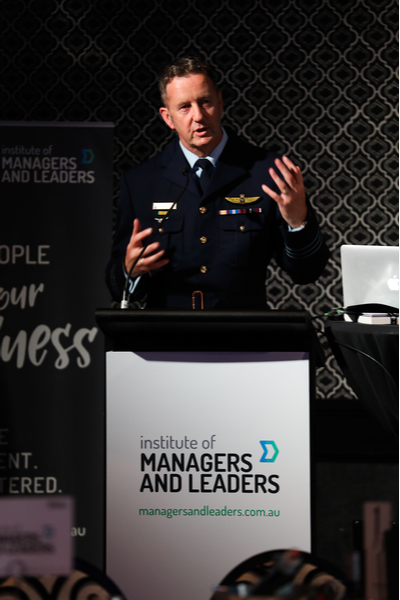Wellness is actively pursuing good health and wellbeing, according to Eliza Freney IMLa, Advanced Sports Dietitian with Cricket Australia. She shares four wellness tips for leaders.
Continue readingLessons from Matariki: Why a strong sense of community is vital to good business
Matariki is about togetherness and forging a strong sense of community. It also teaches leaders vital lessons for good business.
Continue readingManaging risk must be a collective effort
In the wake of the pandemic, we come to see that proactive and collaborative measures to prepare for the unknown should involve not only those tasked with “risk management” in their titles but every team that is expected to mobilise in a crisis to ensure business continuity.
Continue readingReassessing the leader’s role when it comes to mental health and wellbeing
Today’s leader is responsible for more than their people’s performance. We are also responsible for supporting our people to become their best. And that includes looking after their mental health and wellbeing.
Continue reading5 ways it pays to be a member
Could a professional network be the answer you’re looking for?
Not everyone is a ‘joiner’ – in fact, some people even dread the idea of talking to strangers at professional events! But no matter what industry you work in, networking is almost inevitably something you’ll need to do at some point. The good news? By tapping into a network of like-minded career people, you may gain a lot more than you expect. Whether you’re an aspiring entrepreneur or a well-established manager, joining a professional membership organisation can be a great way to connect with people you’d never otherwise meet, and gain unexpected benefits.
We asked a few of the Institute’s Members what motivated them to first join up, and why they benefited from being part of the IML ANZ community. Here are a few of their answers – if you can relate to any of these, perhaps it’s worth signing up for a professional association!
1. When you want to get to the top, pronto.
If you have clear career goals in your sights, and you want to achieve them as quickly as possible, then it’ll certainly pay to put yourself out there. By joining a membership organisation, you’ll have plenty of opportunities to do just that – whether it’s by attending events, connecting online, or contributing content to a blog or LinkedIn. Building a professional profile is especially important when you’re first establishing your career (or when you are trying to establish yourself as an expert in a field or on a topic). After all, no matter what business you’re in, it helps to meet people you wouldn’t cross paths with in the office kitchen – broadening your perspective, opening up potential job opportunities down the track or seeking out business development opportunities. As the old adage goes, “sometimes it’s who you know, not what you know.”
2. When you’re running a business, and feeling a little isolated.
Running your own show has many perks: freedom and flexibility for a start. But while it’s exciting, the life of an entrepreneur can also be a lonely one – and you may find yourself missing those small human interactions you once took for granted in a bigger office. This is where being a Member of an organisation like IML ANZ can make all the difference. Not only do you have events to look forward to, you can even take advantage of Member lounges – a great alternative to working from home! Not only is it nice to bump into new people on a social level, it can open up new doors professionally too. Who knows, maybe that nice person sitting beside you is your next big client?
3. When you’ve reached a career plateau, and aren’t sure what’s next.
When you’ve been working in the same industry for a while, a time might come when you hit a wall. You’re not sure how to progress, or what direction to move in – and chances are, there will be a limit to how much people in your existing organisation can help you. If you’re in this particular boat, it can really help to take a step back and talk to people outside your immediate orbit – and of course, joining a professional community is an easy way to find them.
Seeking advice from people with different perspectives can help you see your own situation more clearly, and it could even inspire you to make a career change you’d never previously considered. You might have a light bulb moment attending one of our Masterclasses. Otherwise a lot of our Members find the reading material provided (like the quarterly magazine, Leadership Matters) very useful, as it’s designed to provoke thought and spark new ideas.
Or if you really want to stand out, IML ANZ is also the only organisation to offer the Chartered Manager accreditation: an internationally recognised designation that can really set you apart.
4. When you’ve got a dilemma you’re not sure how to solve.
While it’s easy to ask for help when you’re starting out in your career, it can become harder as you rise up through the ranks of management. Not only will there be fewer people around who are more senior than you, there can be politics that prevent you from wanting to seek their help. That said, no matter how experienced you are, there will be moments when you need a second opinion – maybe you have a tricky employee to manage, or maybe you’ve lost touch with what’s considered best practice in your sector.
This is certainly a time when a membership organisation like IML ANZ can help. As well as connecting you with valuable learning resources (including videos, articles, e-books and research), the Institute can also put you in touch with people who’ve ‘been there, done that’ – peers who can provide guidance without any strings attached. Because, no matter what level you’re at, leadership is a skill that you never stop learning.
You also have the chance to find a mentor to give you personal guidance – which is a serious advantage in our competitive job market. It might be just the circuit breaker you need!
But mentoring isn’t just for those who are seeking guidance…
5. When you’ve reached a point where you’d like to give back.
Chances are, you won’t have reached your current level of success without the help of at least one or two people. If you were really lucky you may have even had a mentor who shared their advice and knowledge at critical points in your career. What’s important to remember is that these relationships aren’t just valuable for the mentees – they’re also very satisfying for the mentors. If you’re at a stage in your career where you have valuable wisdom and life lessons to share, why not give back by becoming a mentor? Doing so through a membership organisation means you can make a real contribution to your industry. You might even find yourself learning a thing or two from the people you mentor – and at the very least, you’ll gain fresh insight into topics you thought you knew back to front.
Curious about how IML ANZ Membership works, and what it costs? Click here to check out more about our professional community.
Accreditation: The secret to a successful transition
Humans are hardwired to resist uncertainty. It’s no wonder change can be daunting even for some of the most resilient people – those in the defence force.

In 2018, the Department of Defence released the Transition Taskforce report, that estimates around 5,500 to 6,000 members of the defence force leave active service annually. That means thousands of men and women make a life-changing transition every year.
The same report reveals that a significant barrier to an effective transition is feeling unprepared, or ill-equipped to manage the differences between the military and civilian environments.
It’s a common feeling. “There’s always that fear, I know I felt it when I made the change when I left the Royal Air Force,” recalls Paul Hughes CMgr FIML, former Officer Commanding 3 Wing Australian Air Force Cadets and now a client relationship manager for Converge International, one of the largest employee assistance providers in Australia.
“I think it’s because it’s perceived as two different worlds, the military and the ‘civvy’ (civilian) world. But they’re more similar than what people imagine.”
Minding the gap
And where there are differences in these two worlds, it seems veterans simply need to validate the skills they already gained in service.
That’s what Ben Urquhart CMgr AFIML, a communications electronic technician for the RAAF who later secured leadership roles at Saab Australia, Ultra Electronics and Kongsberg Defence Australia, discovered.

“One of the challenges coming out of service was that I didn’t know how to talk to civilians,” says Urquhart. Not that he lacked communication skills, but he had to adjust his style to suit a new audience – one that didn’t have the military mindset. Urquhart points out that it was “the communication skills to motivate people,” that he crucially needed.
Urquhart looked towards leadership skills development to close that gap and completed a diploma course. However, he reached a stage in his career where classes just weren’t enough. “I considered doing an engineering degree but quickly realised that I wanted to stand out for my management and leadership skills, not my technical skills,” says Urquhart. So Urquhart applied to become a Chartered Manager, the highest accreditation available for managers and leaders.
Hughes believes this is a vital step for those wanting to validate their skills as they exit the defence force. “Accrediting your skills is a key move. It’s about realising your worth and value, knowing what you can bring to the table and getting formal recognition for it,” says Hughes.
Three tips on making a successful transition
Both Urquhart and Hughes believe that there are many practical steps to take if you want to make a successful career transition into the civilian workplace.
- Network with non-military professionals. Urquhart has thoroughly enjoyed networking with leaders from different industries as a member of the Institute of Managers and Leaders Australia and New Zealand (IML ANZ). It has opened his mind to the way others have achieved success. Plus, the Transition Taskforce report lists establishing new networks as one of the ways to enable a successful transition into civilian life.
- Accredit your skills. Neither Hughes nor Urquhart completed a degree, but that didn’t stop them from becoming successful and respected leaders. Hughes believes that by obtaining a designation, such as Chartered Manager, you gain clarity on your professional ‘mission’. It helps you become a leader who continually develops their knowledge and competence while empowering you to make a positive impact on others.
- Build up your courage. Hughes observes that the military provides its people with excellent leadership skills training. So veterans often enter the non-military world already equipped with sought-after leadership skills. Formal recognition of those skills can give you the courage you need to back yourself. Remember, to foil fear you need courage.
The business world needs better leaders
Find out how you can accredit your leadership skills and gain confidence and courage. Take the Chartered Manager eligibility quiz now.
Three ways to kick start your cybersecurity and privacy health check
Many businesses may not return to operating the way they did before the coronavirus lockdown. Now that most of your team use third party tools and resources for operating remotely, how can you properly assess these tools for long-term and more permanent use and ensure good security and privacy practices are in place?
Continue readingRebuilding organisational culture post-pandemic
If you want to change the culture, you need to change the rules of belonging. How do we ensure that we bring forward the best of our pre-pandemic culture and leave the worst behind?
Continue readingRam Charan on the secrets of Amazon’s success
Global business adviser, Dr Ram Charan speaks to IML ANZ about what business leaders can learn from retail giant Amazon’s success.
Continue reading










